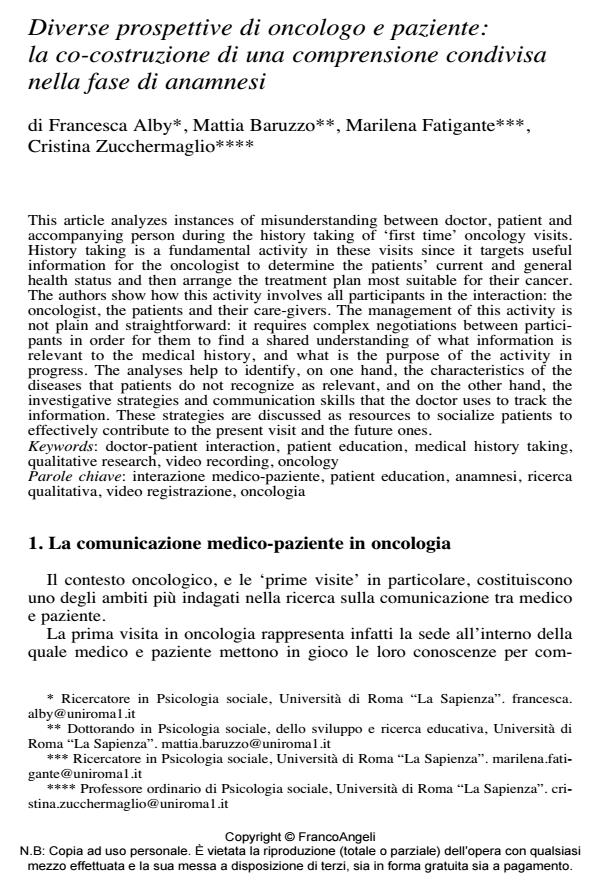Diverse prospettive di oncologo e paziente: la co-costruzione di una comprensione condivisa nella fase di anamnesi
Titolo Rivista SALUTE E SOCIETÀ
Autori/Curatori Francesca Alby, Mattia Baruzzo, Marilena Fatigante, Cristina Zucchermaglio
Anno di pubblicazione 2015 Fascicolo 2015/2
Lingua Italiano Numero pagine 23 P. 37-59 Dimensione file 106 KB
DOI 10.3280/SES2015-002004
Il DOI è il codice a barre della proprietà intellettuale: per saperne di più
clicca qui
Qui sotto puoi vedere in anteprima la prima pagina di questo articolo.
Se questo articolo ti interessa, lo puoi acquistare (e scaricare in formato pdf) seguendo le facili indicazioni per acquistare il download credit. Acquista Download Credits per scaricare questo Articolo in formato PDF

FrancoAngeli è membro della Publishers International Linking Association, Inc (PILA)associazione indipendente e non profit per facilitare (attraverso i servizi tecnologici implementati da CrossRef.org) l’accesso degli studiosi ai contenuti digitali nelle pubblicazioni professionali e scientifiche
This article analyzes instances of misunderstanding between doctor, patient and accompanying person during the history taking of ‘first time’ oncology visits. History taking is a fundamental activity in these visits since it targets useful information for the oncologist to determine the patients’ current and general health status and then arrange the treatment plan most suitable for their cancer. The authors show how this activity involves all participants in the interaction: the oncologist, the patients and their care-givers. The management of this activity is not plain and straightforward: it requires complex negotiations between participants in order for them to find a shared understanding of what information is relevant to the medical history, and what is the purpose of the activity in progress. The analyses help to identify, on one hand, the characteristics of the diseases that patients do not recognize as relevant, and on the other hand, the investigative strategies and communication skills that the doctor uses to track the information. These strategies are discussed as resources to socialize patients to effectively contribute to the present visit and the future ones.
Parole chiave:Interazione medico-paziente, patient education, anamnesi, ricerca qualitativa, video registrazione, oncologia
Francesca Alby, Mattia Baruzzo, Marilena Fatigante, Cristina Zucchermaglio, Diverse prospettive di oncologo e paziente: la co-costruzione di una comprensione condivisa nella fase di anamnesi in "SALUTE E SOCIETÀ" 2/2015, pp 37-59, DOI: 10.3280/SES2015-002004